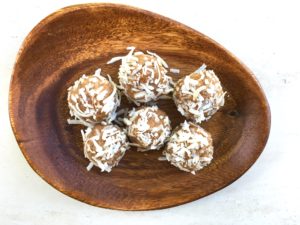Goji Berry – the Chinese superfood
The Goji Berry has grow in popularity for it amazing health benefits. There are some amazingly effortless ways to enjoy this Asian fruit, it’s available fresh, dried or in juice form. I’m going to give you a run down on the Goji Berry and why you should add them to your die, along with some super simple recipes.
With the addition of Goji Berries in your diet you’ll experience the following health benefits:- cholesterol control, anti-aging, heart protection, stress lowering, improving digestion, protecting the brain, protecting your liver, increases sleep quality and these are only SOME of the benefits. No wonder it’s called a superfood.
In fact, I recommended a friend add this superfood to her diet as she was lacking energy and struggling to fall pregnant with her second child. She needed a tonic boost and the addition of goji berry helped. She fell pregnant quite quickly after that – there’s no proof it was the goji! So, if you’re looking for a pick-me-up to boost energy, immunity try this fruit – it has more Vitamin C than oranges. Remember, stress reduces vitamin C and reduces immunity.
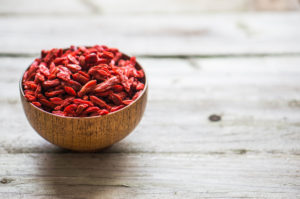 Most goji berry recipes are simple and require little to no cooking whatsoever. It’s such a versatile fruit that it can be adapted and incorporated into most recipes that call for dried fruits.
Most goji berry recipes are simple and require little to no cooking whatsoever. It’s such a versatile fruit that it can be adapted and incorporated into most recipes that call for dried fruits.
You can simply throw a few of these berries into your salads, just as you would dried cranberries or raisins. Stir goji berries into your favourite yoghurt with some muesli for a super healthy breakfast.
A simple rule to use when using goji berries, is to replace raisins or cranberries with Goji Berries. It’s just that simple. Try putting them into your chicken or duck marinade, or add goji juice. Many people use raisins and dried cranberries in rice dishes, so why not add goji berries instead?
Here are some of my favorite recipes to incorporate Goji Berries into your diet:
Kids -icles/icecream
Goji fruit and juice can be frozen to make an excellent and healthy dessert or treat on a hot day. There are some great goji berry recipes for kids, including simple goji-cicles.
Just pour goji juice into an ice cube tray, and stick toothpicks or paddle sticks in to serve as popsicle sticks.
You can also make chewy goji bars. Take your usual recipe for fruit and nut bars and add goji berries to the mixture.
Goji Elixir – Energy Booster
Add one handful of Goji Berries into a big glass of hot or cold water, juice or herb tea , and let them sit and hydrate for 3-5 minutes (they become plump and juicy) or put several handfuls in a pitcher and enjoy all day as you drink your own delicious elixir.
Chewing the Gojis as you drink is a great experience and with 500 times more Vitamin C by weight then Oranges, It’s a great pick-me-up between meals and the most delightful way to enjoy a glass of water.
Goji Fruit Smoothie
For a unique experience in phytonutrient energy that you feel throughout your body as a buoyant lift that fills you with joy and feeds you right down to a cellular level.
Blend together equal amounts of Goji Berries, blueberries, cherries, apples, raspberries and blackberries. Put in a blender for a few seconds, add a cup of water, rice milk, or orange juice for easier blending. To add a special touch, dust the top of juice with cinnamon or cocoa powder and a light sprinkle of chopped pine nuts and serve.
Buckwheat Oats with Goji Berries
For people who struggle with wheat allergies and gluten intolerance, buckwheat is an ideal food. Most people who suffer from physical and emotional challenges find that removing wheat and other gluten containing foods from their diet makes a profound difference in how they think and feel.
Buckwheat has plenty of protein and B vitamins, and is rich in phosphorus, potassium, iron, and calcium. Although buckwheat has many grain-like characteristics, it is from an entirely different botanical family, and is actually a fruit. Since buckwheat is unrelated to the classic cereal grains, those who are allergic to wheat can tolerate buckwheat. It is also delicious!
To make a serving for two people: Bring 2 cups of water to a boil, slowly stir in 1 cup of Cream of Buckwheat, return to boil. Add a handful of Goji Berries per person. A dash of good quality salt is optional. Reduce heat to low, simmer 10 minutes stirring frequently.
Goji Recipes on the Go
Pure and Simple Goji Trail Mix
Goji trail mix for example, involves just throwing goji berries in with other dried fruits and grains for a delicious on the go snack. Simple.
Mix up a combination of goji berries, pumpkin seeds, sunflower seeds, flax seeds, pecans, small amount of pine nuts, walnut pieces, dried blueberries, apples slices, cherries, peaches, pineapple, and a small amount of coconut shreds.
Boost your energy and up your Vitamin C, give this small powerhouse fruit a go.
Tired of that feeling of not having enough energy to do those things you KNOW would help get your health back on track.
You’re ready to take action and make a change, but it’s overwhelming and you don’t know where to start. 
You need someone to guide you through, and lay out the steps you can take to start feeling better and more energised so you can start living the dynamic vibrant life you deserve.
I’ve created this FREE e-book ‘10 Ways to Live A Dynamic Life’ to help you get started (or restarted) on your journey to better health.
 Raw cacao beans are full of flavonoids that act as natural antioxidants. Antioxidants protect the body from ageing and disease caused by free radicals. Raw cacao contains up to four times the antioxidants of traditional cocao powder.
Raw cacao beans are full of flavonoids that act as natural antioxidants. Antioxidants protect the body from ageing and disease caused by free radicals. Raw cacao contains up to four times the antioxidants of traditional cocao powder.


 For so many years, health experts have preached that a low fat diet was the way for you to lose weight and be healthier. They proclaimed fats as your enemy, linking them to heart disease and other illnesses.
For so many years, health experts have preached that a low fat diet was the way for you to lose weight and be healthier. They proclaimed fats as your enemy, linking them to heart disease and other illnesses.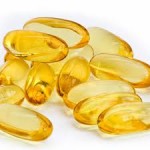 skin and hair soft and subtle, lubricate your joints.
skin and hair soft and subtle, lubricate your joints.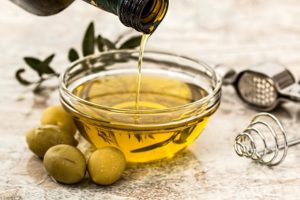
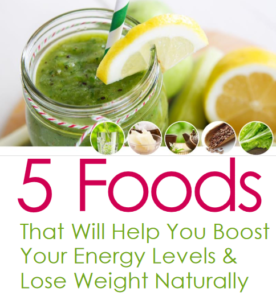
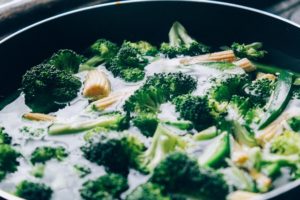 So, why eat brassicas anyway?
So, why eat brassicas anyway? 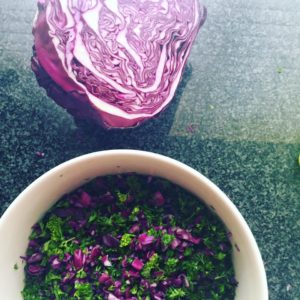
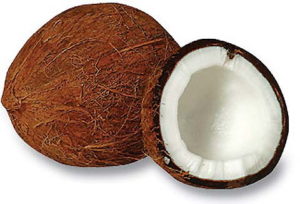 and has been found to have anti-aging and regenerative effects.
and has been found to have anti-aging and regenerative effects.
